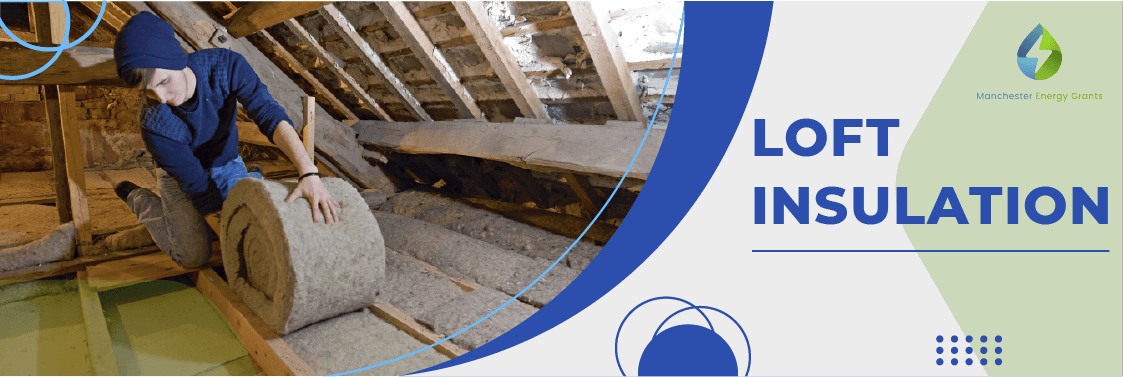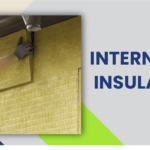Uninsulated homes lose about a quarter of their heat through the roof. Insulating your loft, attic or flat roof can reduce heat loss and save money on your heating bills.
Loft Insulation: How to choose the Best
Loft insulation is something you can add to the roof of your house or the space under your roof. It helps keep your house warm and can be applied in different ways. If you have an unfinished wooden floor, use rolls or lightweight slabs for insulation. If your floor is finished or made of concrete, you can use high-density boards which are very common and leaves a walkable surface.
Our insulation range is made of premium material, a cost-effective and energy-efficient solution to keep your house at a consistent temperature.
Who can qualify for a loft insulation grant?
To get free insulation under the ECO scheme, you need to own your home or privately rent it with your landlord’s permission. The energy suppliers will need access to your loft to install the insulation. You will have to be able to insulate at least two-thirds of your loft space, meaning households that already have more than 100mm of loft insulation will be excluded from the scheme.
To qualify for free insulation under the scheme, your household income should be £31,000 or less, or someone in your household should be receiving one of the benefits listed below:
1 Income-based Jobseekers Allowance (JSA)
2 Income-related Employment & Support Allowance (ESA)
3 Income Support (IS)
4 Pension Credit Guarantee Credit
5 Working Tax Credit (WTC)
6 Child Tax Credits (CTC)
7 Universal Credit (UC)
8 Housing Benefit (new eligible benefit under ECO4)
9 Pension Credit Savings Credit (new eligible benefit under ECO4)
10 Child Benefit (Based on the limits of income)
You may be able to receive a grant that does not have to be repaid if you meet the eligibility criteria. Even if you are not entitled to a 100% grant, it is still worth enquiring as you may be able to receive a subsidy that will help reduce the cost of installing it.
Free Insulation Grants in the UK
Not all properties suit loft insulation and will be subject to a survey. There is no cost for this. We at Manchester Energy Grant have another option to reduce your energy expenses and maintain a warm and comfortable home by using cavity wall insulation. You can contact us if you want to learn more about our products and which is best for your project.
Frequently Asked Questions
Can I get a grant to insulate my loft?
Certain households can be eligible for funding to install Loft insulation through the government-backed ECO scheme. Our loft insulation installers will be able to guide this matter.
My home has a flat roof. Is it suitable for Loft Insulation?
If you have a flat roof, you may wonder if it’s suitable for insulation. The answer is yes, you can insulate a flat roof, and it’s a smart way to make your home more energy-efficient. If your flat roof is uninsulated, it can cause the heat loss and increase energy bills.
In my loft, there is already some foam or fiber insulation. How can I determine whether it is working effectively?
To provide optimal energy savings, ensure that the insulation material in your loft is thick enough. The recommended depth for insulation is 270mm (equivalent to approximately 10 inches), typically installed in two layers, with 100mm between the ceiling joists and 170mm across the joists.
At Manchester Energy Grants, we provide “top-up” services to improve your loft insulation and meet energy efficiency standards. To learn more, you can request a no-obligation survey from us.
How long does installing loft insulation take?
A typical three-bedroom house requires up to two hours to install loft insulation. Bigger houses and bungalows may require more time because they have a larger loft area.
Can I still use my loft for storage after Loft Insulation is installed?
Yes, you can still use your loft for storage after installing the insulation. However, taking some precautions is important to ensure that the insulation remains effective and that your stored items are safe.
1 Firstly,
It’s important to ensure that the weight of the stored items does not compress or disturb the insulation material. This can reduce its effectiveness and create gaps that allow heat to escape.
2 Secondly,
Ensure proper ventilation in the loft space to prevent moisture buildup that can damage both your stored items and insulation.
itself.
3 Lastly,
it’s important to keep the loft space clean and free of debris, as this can attract pests and create fire hazards. Regularly cleaning and organizing the space can help prevent these issues and ensure your stored items remain safe.








 Boiler Grant
Boiler Grant